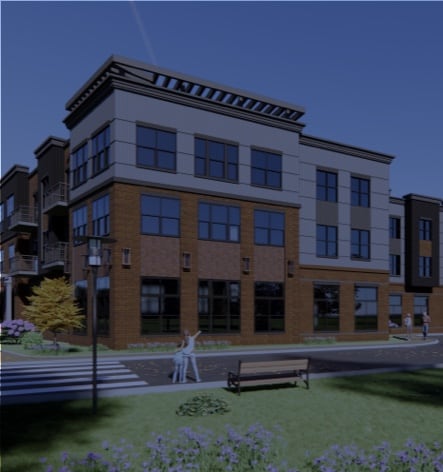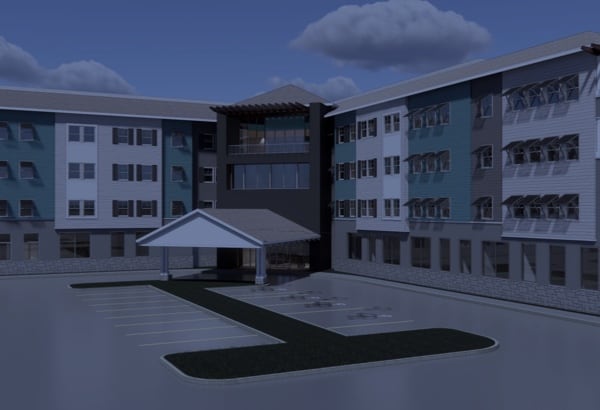The senior population in the United States has increased dramatically over recent years, fueling demand for senior housing. According to the United States Census Bureau, 1 in 6 Americans identifies as 65 or older, and the percentage of older adults is continuously growing. That’s a lot of growth in the older adult living development industry.
Operating a senior living community involves a delicate balance of providing top-notch care and creating a comfortable environment while maintaining financial stability. A well-structured operating budget is critical to striking this balance and must keep in mind revenue streams, controlling expenses, accounting for capital investments, and maintaining contingency funds.
Revenue Streams
It’s crucial to identify the primary revenue sources that keep the senior living community financially sustainable while crafting your budget:
- Resident fees: Fees include monthly rent payments from residents, which vary based on the type of accommodation and the level of care provided. In New Jersey, senior living community rent is estimated to be $82,692 per year per resident.
- Additional services: Services include charges for specialized care services, meal plans, transportation, and recreational activities. There are different types of communities older adults can consider, some of which offer luxurious experiences that can add to the establishment’s revenue.
- Private pay and insurance: Many residents use private funds or insurance to cover expenses. Understanding these sources helps estimate revenue accurately.
Operating Expenses
Managing expenses is a crucial aspect of creating a successful operating budget. Some key expense categories include:

- Personnel costs: These costs encompass salaries and benefits for staff members, including caregivers, nurses, administrators, and maintenance staff. Personnel costs make up one of the most expensive parts of an assisted living community.
- Facilities and maintenance: Costs associated with keeping the physical environment safe, clean, and well-maintained, including repairs, utilities, and upkeep.
- Food services: Expenses related to providing nutritious meals and snacks for residents, considering dietary restrictions and preferences. Another expense that usually takes up a majority of the yearly budget.
- Healthcare services: This category includes medical supplies, medications, and specialized care services for residents with health needs. In an older adult community, healthcare services are a must.
- Marketing and administrative costs: Budget for marketing efforts to attract new residents and administrative expenses to manage the community efficiently.
Capital Expenditures
While operating budgets focus on day-to-day expenses, capital expenditures plan for long-term improvements and investments. In the context of senior living communities, capital expenditures aim to improve the physical infrastructure, technology, and overall quality of care provided to residents. These costs include renovations, new equipment purchases, and technology upgrades to enhance the quality of care and resident experience.
Significance of Capital Expenditures
Capital expenditures can contribute to the well-being and satisfaction of residents with modern and comfortable facilities, including well-maintained common areas, investments in technology and infrastructure, and investments in safety and regulatory compliance.
While capital expenditures require upfront investment, they can lead to long-term cost savings. For example, investing in advanced technology streamlines operations and helps staff focus on providing residents with quality care. Energy-efficient systems can reduce utility costs over time, while well-maintained facilities require fewer repairs and replacements.
Contingency Funds
Incorporating a contingency fund is a prudent step to account for unexpected expenses, fraud, theft, natural disasters, or financial fluctuations. These funds act as a safety net, ensuring the older adult living community can address unforeseen challenges without compromising the quality of care.
Managing a Contingency Fund
Managing a contingency fund requires proactive planning, discipline, and a commitment to ensuring the well-being of residents. The priority should be to determine an appropriate amount for the fund based on the size of the community, possible risks, and the company’s financial history. Generally, the fund should cover a certain percentage of the annual operating budget, and each time circumstances require that the fund be spent, it should be replenished promptly to ensure the company always has that safety net.
Setting up an automatic transfer of a portion of the community’s revenue to the contingency fund regularly is also essential. Transfers can be made monthly or annually, depending on the community’s financial situation and cash flow. Transferring more when the company is doing well is also a good idea.
Consider keeping the contingency fund separate from the general income to ensure funds are readily available when needed. Keep residents, staff, and stakeholders informed about the existence and purpose of the contingency fund. Transparent reporting fosters trust and demonstrates responsible financial management.
Budget Monitoring & Analysis
Creating an operating budget is just the beginning. Regular monitoring and analysis are crucial to ensure the budget remains effective and sustainable. Here’s how to stay on top of your budget:
- Track actual vs. budgeted expenses: Regularly compare actual expenses against budgeted amounts to identify discrepancies and adjust spending as necessary.
- Make adjustments and revisions: As the senior living community evolves, be prepared to make necessary budget revisions to reflect changing resident needs and economic conditions.
- Monitor resident occupancy: Monitor occupancy rates and adjust revenue projections accordingly. A decrease in occupancy may require cost-saving measures.
- Use financial software and reporting: Use specialized financial software to streamline budget tracking and generate insightful reports for informed decision-making.
Budget Successfully with Distinctive Living
A well-structured operating budget can help the financial success of any business, including senior living communities. Senior living communities can offer exceptional care while ensuring long-term financial stability by meticulously outlining revenue streams, controlling expenses, accounting for capital investments, and maintaining contingency funds.
Regular budget monitoring and adjustments are essential to adapt to changing circumstances and maintain a balanced financial outlook. Through careful planning and diligent oversight, senior living communities can thrive and provide an enriching environment for their residents.
An operating budget doesn’t have to be complicated, and with Distinctive Development, your business can thrive. Connect with us today to get started!

















